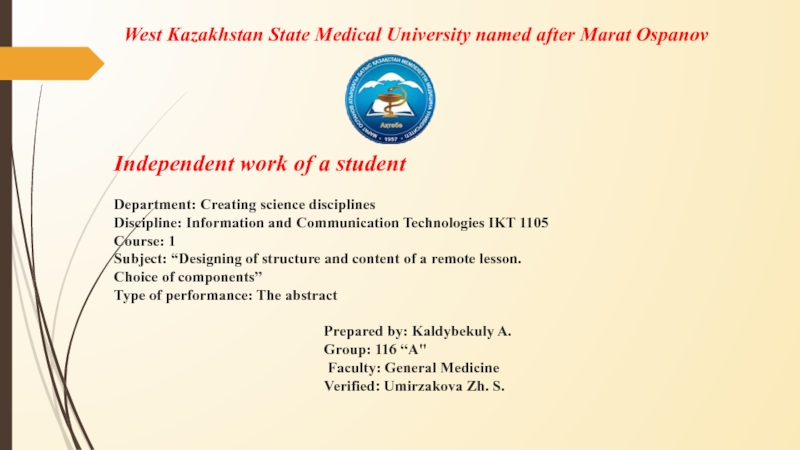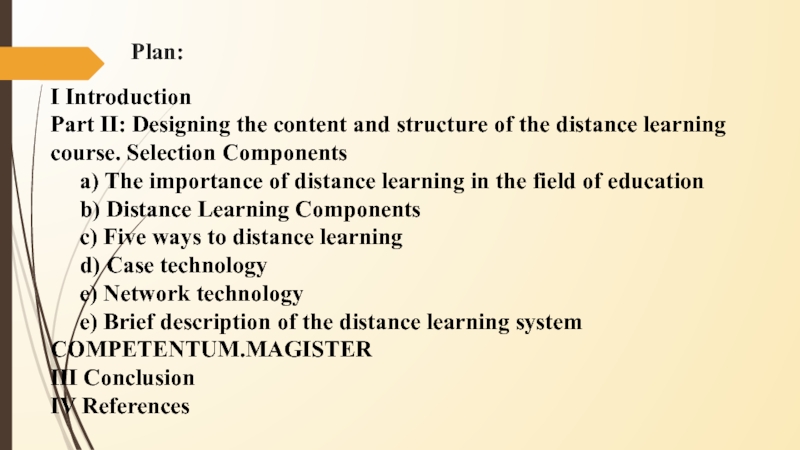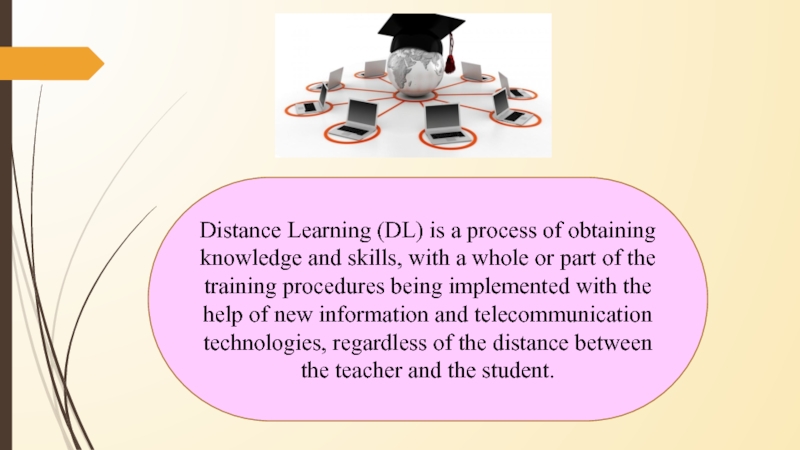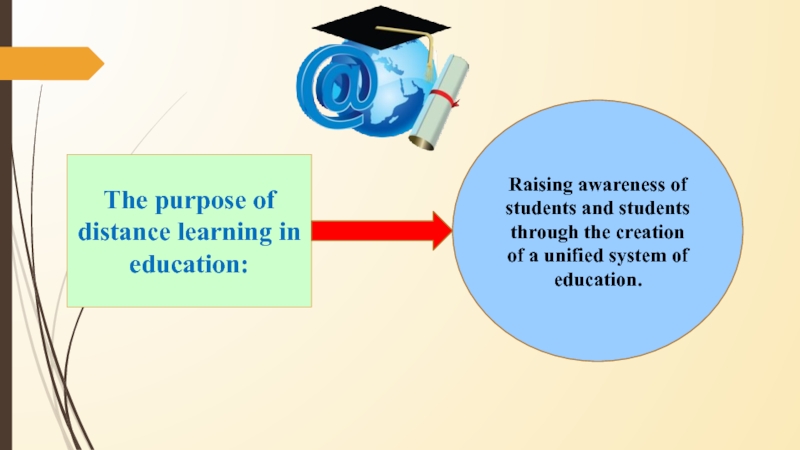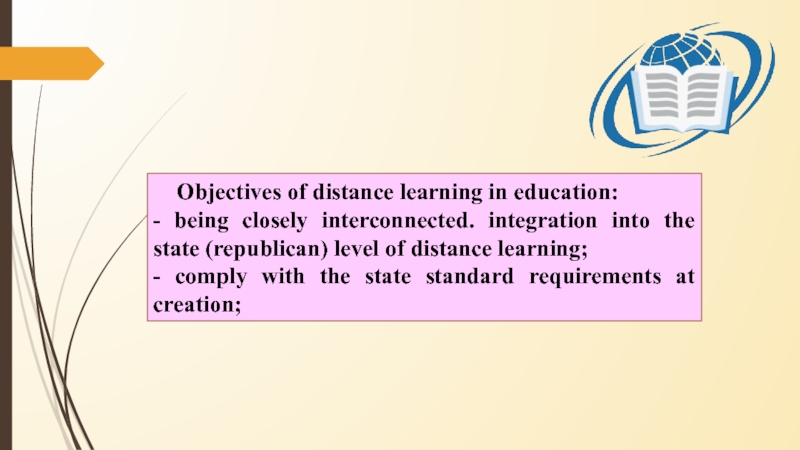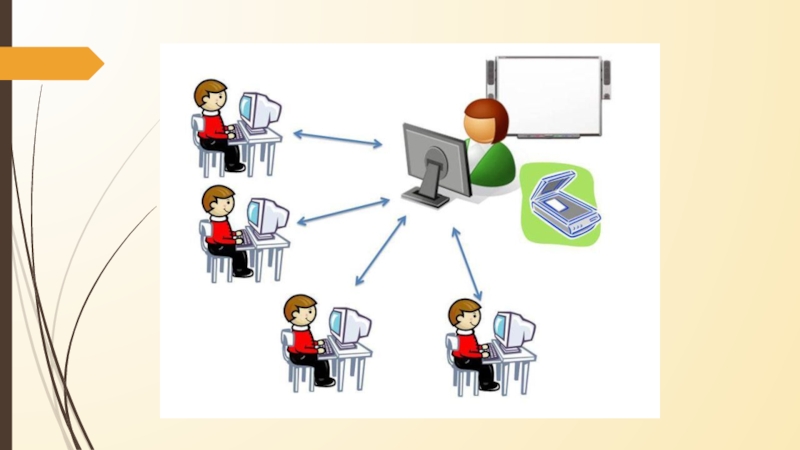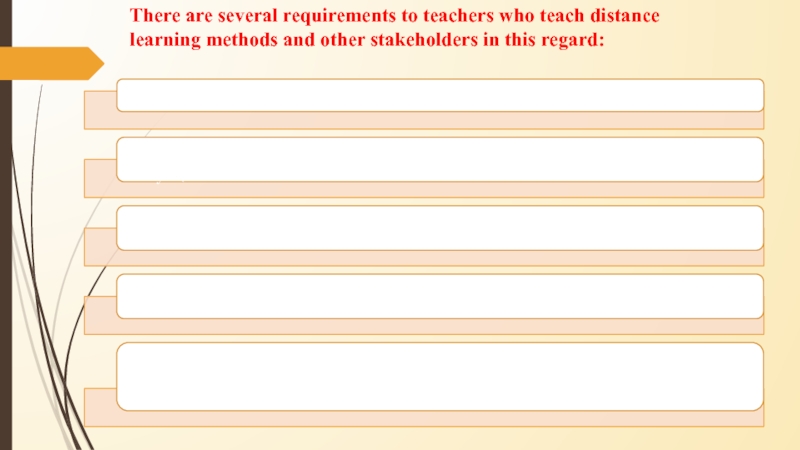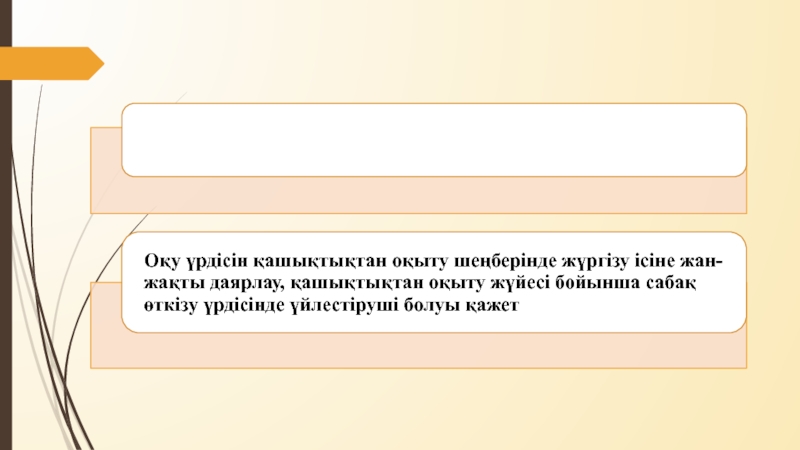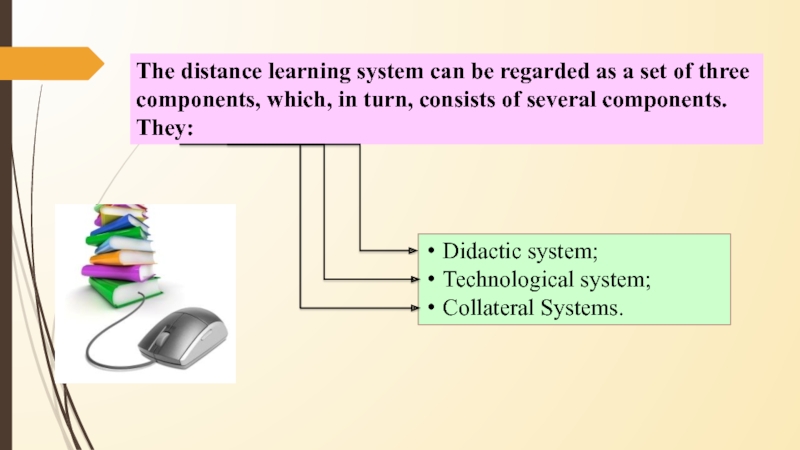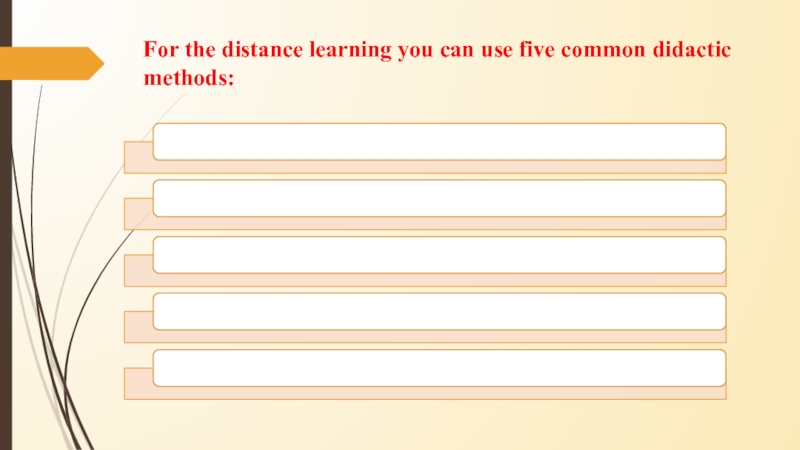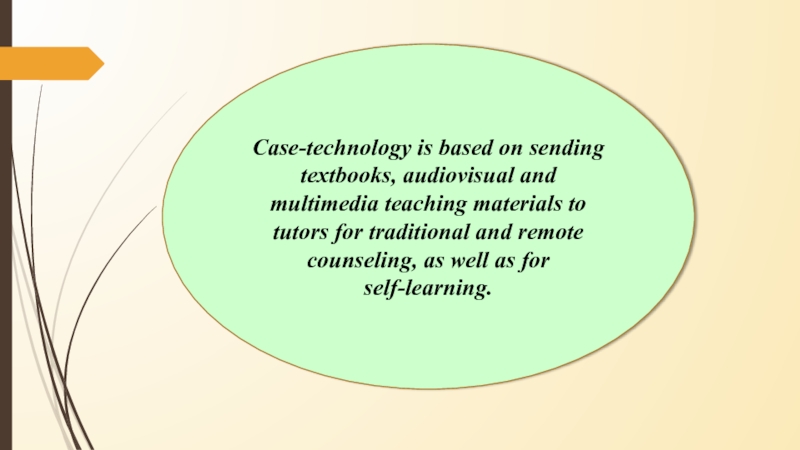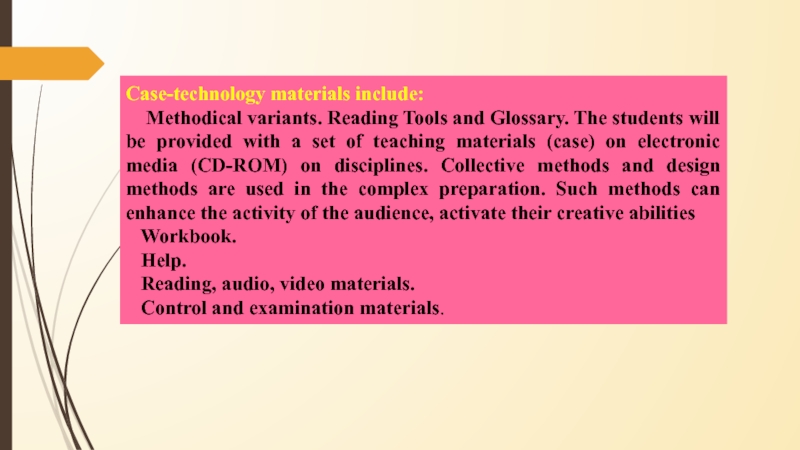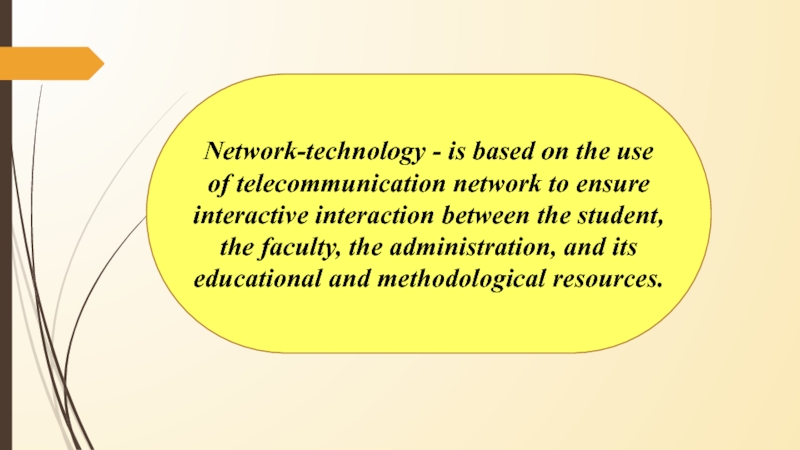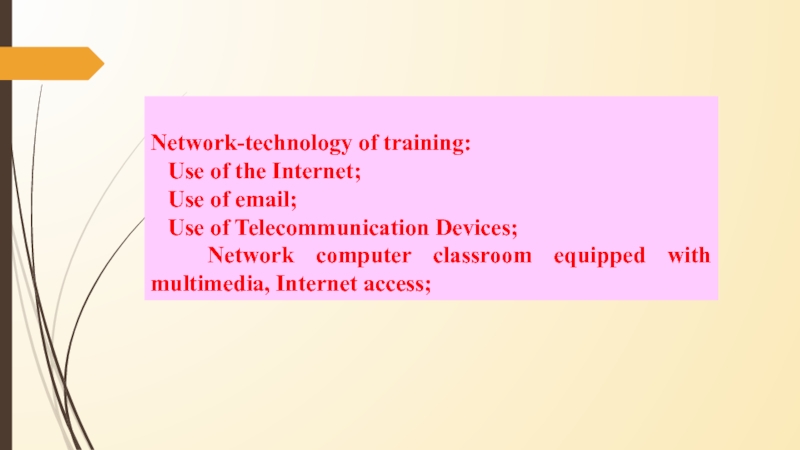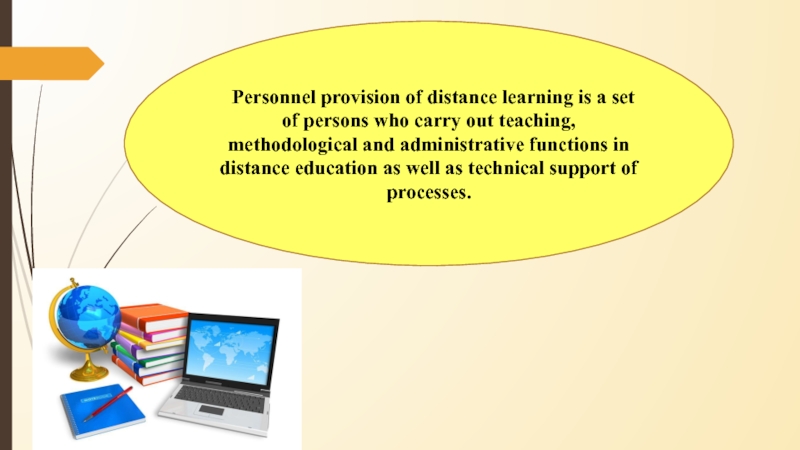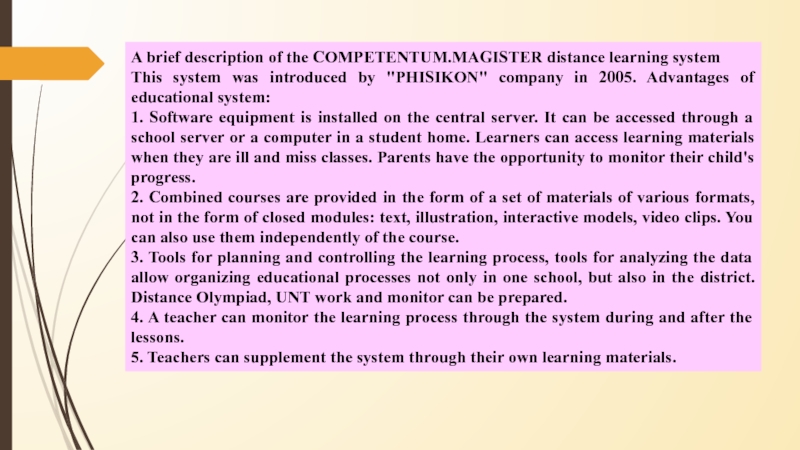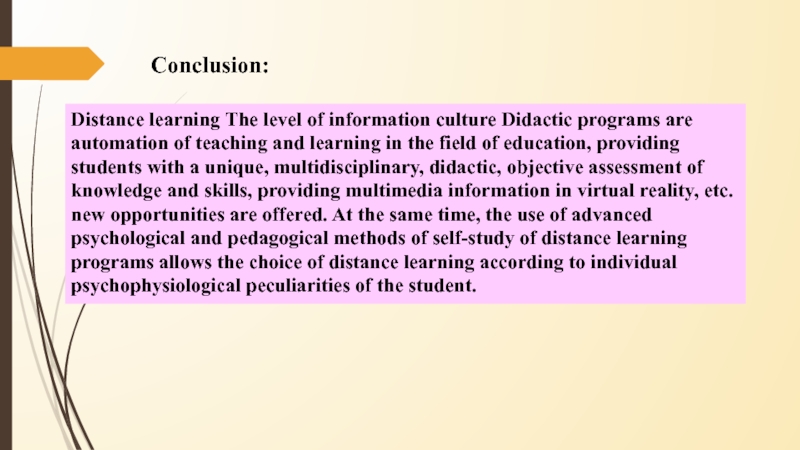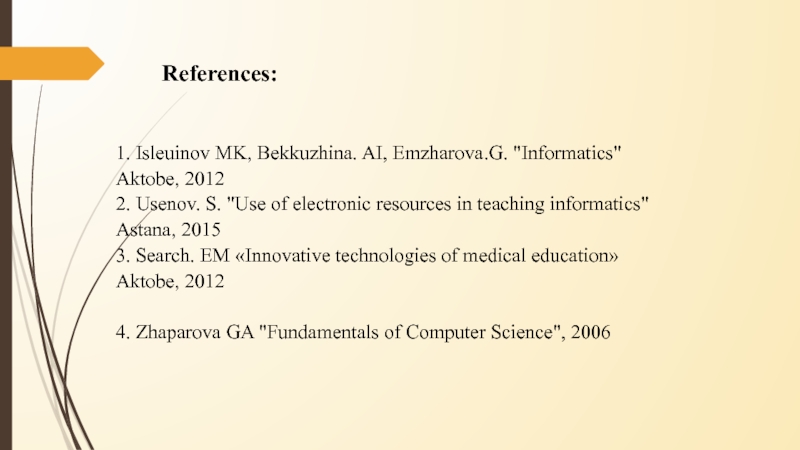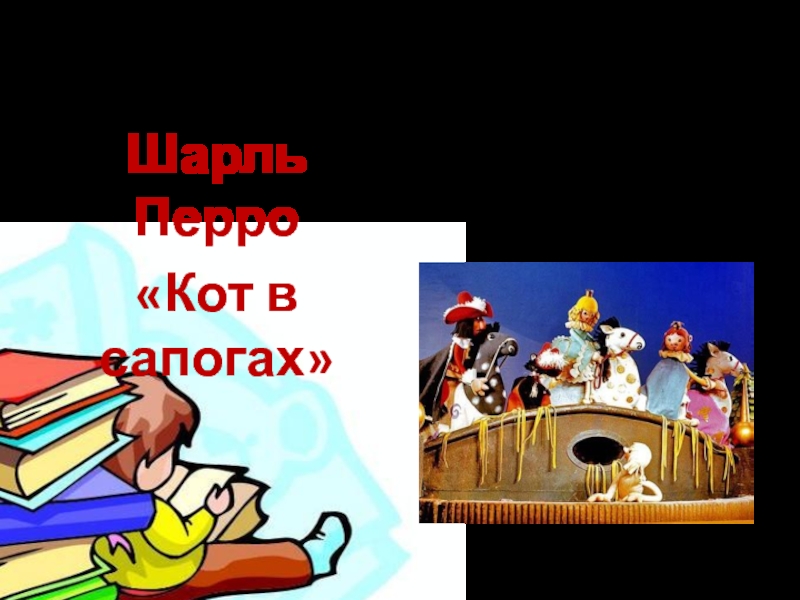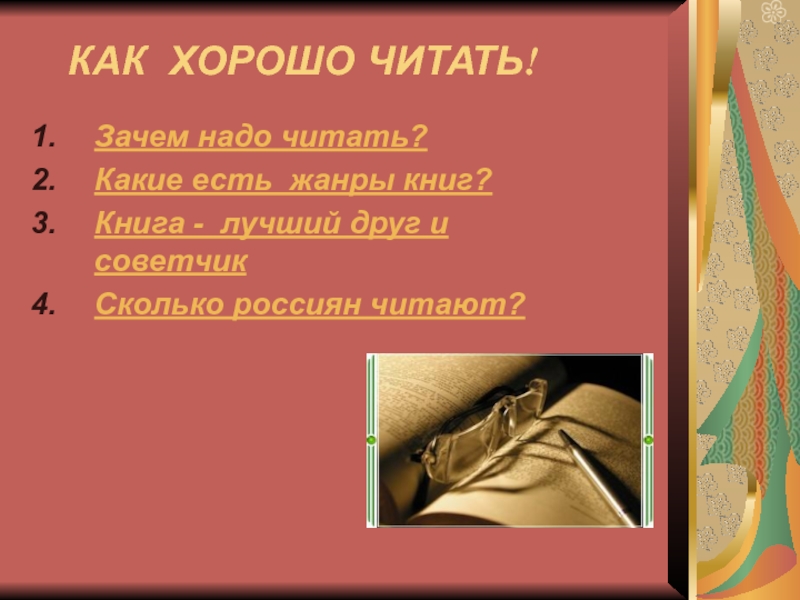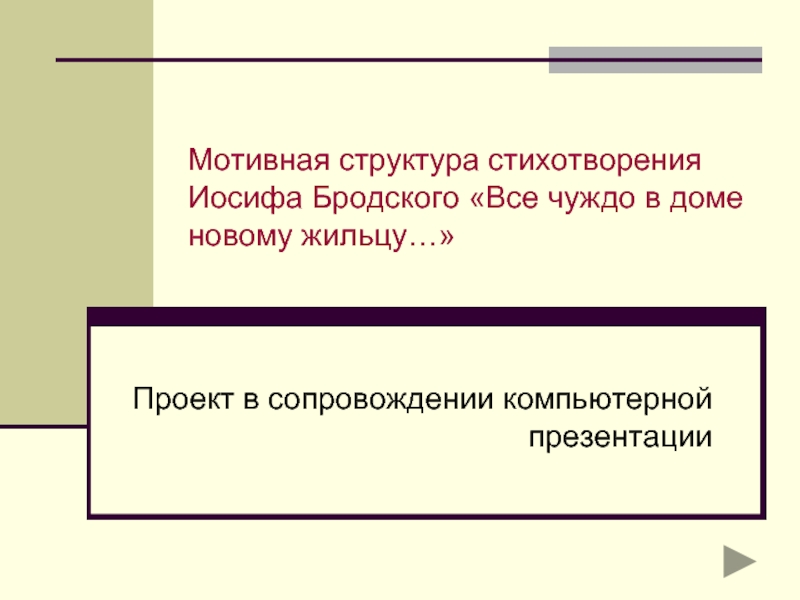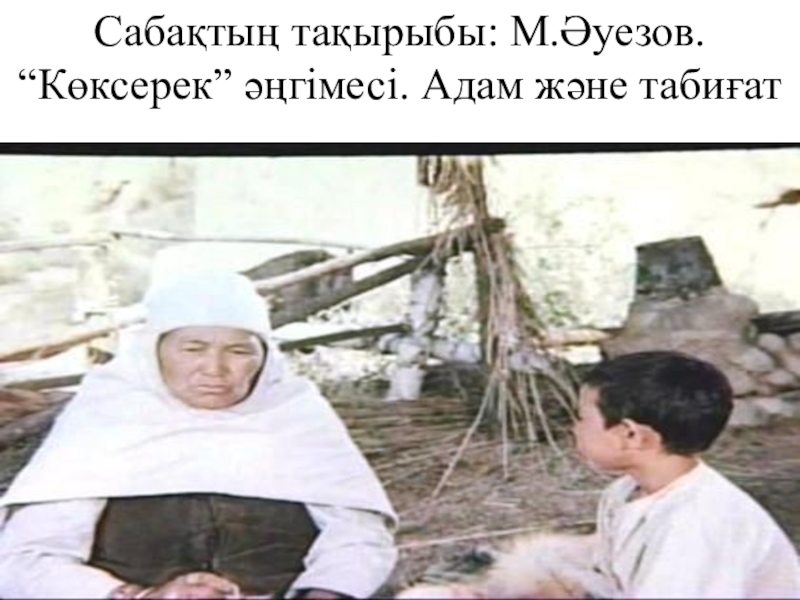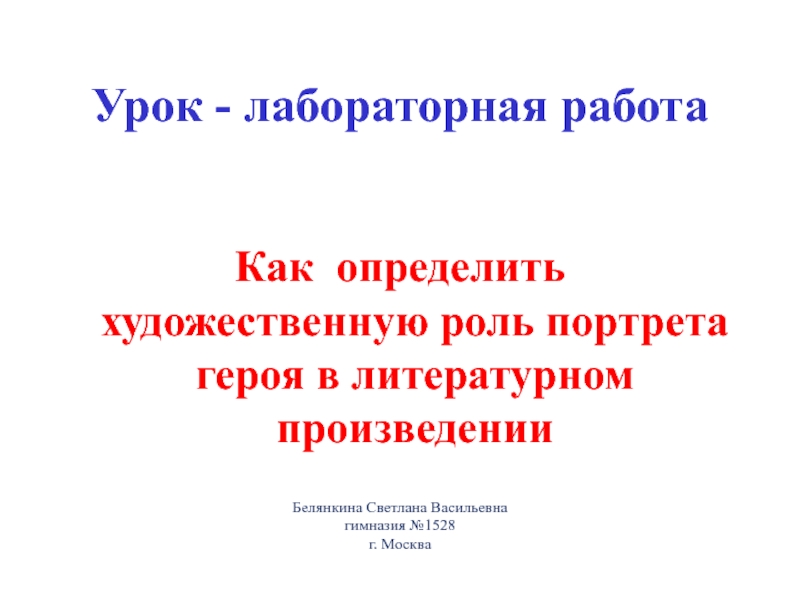Independent work of a student
Department: Creating science disciplines
Discipline: Information and Communication Technologies IKT 1105
Course: 1
Subject: “Designing of structure and content of a remote lesson. Choice of components”
Type of performance: The abstract
Prepared by: Kaldybekuly A.
Group: 116 “A"
Faculty: General Medicine
Verified: Umirzakova Zh. S.
West Kazakhstan State Medical University named after Marat Ospanov
Слайд 2Plan:
I Introduction
Part II: Designing the content and structure of the
distance learning course. Selection Components
a) The importance of distance
learning in the field of education
b) Distance Learning Components
c) Five ways to distance learning
d) Case technology
e) Network technology
e) Brief description of the distance learning system COMPEТЕNTUM.MAGISTER
III Conclusion
IV References
Слайд 3Distance Learning (DL) is a process of obtaining knowledge and
skills, with a whole or part of the training procedures
being implemented with the help of new information and telecommunication technologies, regardless of the distance between the teacher and the student.
Слайд 4The purpose of distance learning in education:
Raising awareness of students
and students through the creation of a unified system of
education.
Слайд 5 Objectives of distance learning in education:
- being closely
interconnected. integration into the state (republican) level of distance learning;
-
comply with the state standard requirements at creation;
Слайд 7There are several requirements to teachers who teach distance learning
methods and other stakeholders in this regard:
Слайд 9DISTANCE LEARNING
Case technology
Network technology
Слайд 10The distance learning system can be regarded as a set
of three components, which, in turn, consists of several components.
They:
Didactic system;
Technological system;
Collateral Systems.
Слайд 11For the distance learning you can use five common didactic
methods:
Слайд 12Case-technology is based on sending textbooks, audiovisual and multimedia teaching
materials to tutors for traditional and remote counseling, as well
as for self-learning.
Слайд 13Case-technology materials include:
Methodical variants. Reading Tools and Glossary.
The students will be provided with a set of teaching
materials (case) on electronic media (CD-ROM) on disciplines. Collective methods and design methods are used in the complex preparation. Such methods can enhance the activity of the audience, activate their creative abilities
Workbook.
Help.
Reading, audio, video materials.
Control and examination materials.
Слайд 14Network-technology - is based on the use of telecommunication network
to ensure interactive interaction between the student, the faculty, the
administration, and its educational and methodological resources.
Слайд 15
Network-technology of training:
Use of the Internet;
Use
of email;
Use of Telecommunication Devices;
Network computer
classroom equipped with multimedia, Internet access;
Слайд 16 Personnel provision of distance learning is a set of
persons who carry out teaching, methodological and administrative functions in
distance education as well as technical support of processes.
Слайд 17The teaching staff and specialists who carry out distance learning
are divided into the following groups:
teaching staff who develops educational-methodical
complexes for distance education;
teaching staff who conducts classes and supervises the students and supervises their knowledge;
specialists (organizers) of organization of distance courses;
specialists (administrators) of technical support of the distance learning system;
tutors;
Слайд 18A brief description of the COMPEТЕNTUM.MAGISTER distance learning system
This system
was introduced by "PHISIKON" company in 2005. Advantages of educational
system:
1. Software equipment is installed on the central server. It can be accessed through a school server or a computer in a student home. Learners can access learning materials when they are ill and miss classes. Parents have the opportunity to monitor their child's progress.
2. Combined courses are provided in the form of a set of materials of various formats, not in the form of closed modules: text, illustration, interactive models, video clips. You can also use them independently of the course.
3. Tools for planning and controlling the learning process, tools for analyzing the data allow organizing educational processes not only in one school, but also in the district. Distance Olympiad, UNT work and monitor can be prepared.
4. A teacher can monitor the learning process through the system during and after the lessons.
5. Teachers can supplement the system through their own learning materials.
Слайд 19Conclusion:
Distance learning The level of information culture Didactic programs are
automation of teaching and learning in the field of education,
providing students with a unique, multidisciplinary, didactic, objective assessment of knowledge and skills, providing multimedia information in virtual reality, etc. new opportunities are offered. At the same time, the use of advanced psychological and pedagogical methods of self-study of distance learning programs allows the choice of distance learning according to individual psychophysiological peculiarities of the student.
Слайд 201. Isleuinov MK, Bekkuzhina. AI, Emzharova.G. "Informatics" Aktobe, 2012
2. Usenov.
S. "Use of electronic resources in teaching informatics" Astana, 2015
3.
Search. EM «Innovative technologies of medical education» Aktobe, 2012
4. Zhaparova GA "Fundamentals of Computer Science", 2006
References:
